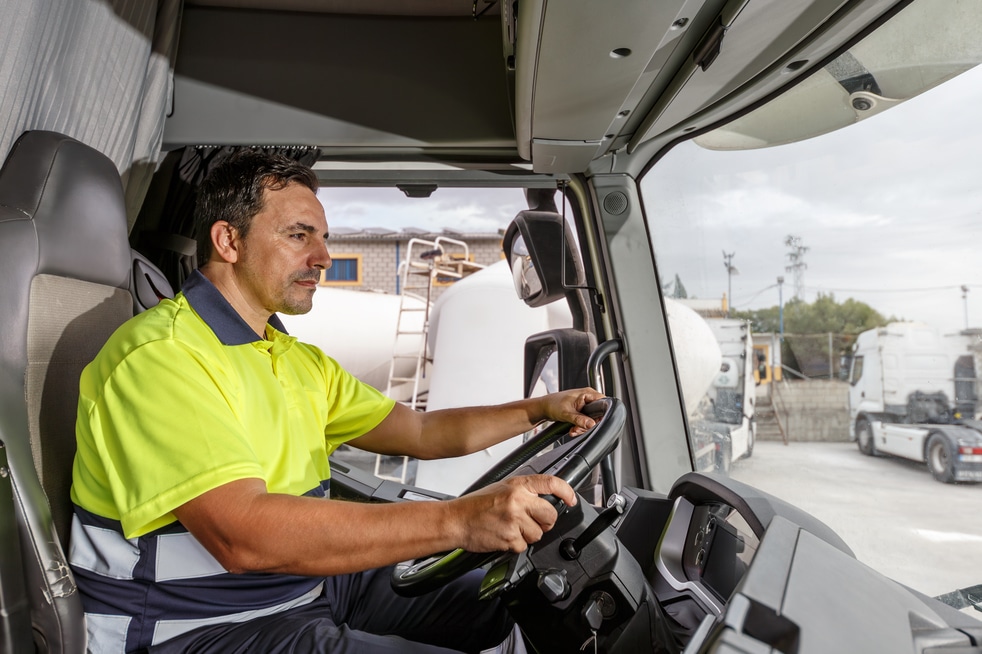With over 22 million acres of forestland, Washington State is one of the country’s leading lumber producers. Timber harvesting of douglas fir, spruce, hemlock and ponderosa pine spans the state. It is not uncommon to share roadways with logging trucks both east and west of the Cascade Range. While drivers can expect to come across logging trucks on highways adjacent to forests, Washington interstates are also highly-travelled trucking routes.
Sharing our roadways with large semi-trucks and trailers carrying 80K pounds of logs raises reasonable safety concerns. As a driver of a passenger vehicle comes into contact with a logging truck, they may naturally wonder: is my car visible to the truck driver? Do the truck’s brakes work sufficiently? Are the logs securely attached to the trailer? If the answer to any of these scenarios is ‘no,’ the outcome could be catastrophic.
Logging truck accidents can produce millions in property damage and cause severe injuries that produce long-term damages.
Collisions involving semi logging trucks are easily among the most devastating road accidents, so having the right legal representative can help you get the compensation you need to recover while you focus exclusively on healing from the trauma.
Have you or a loved one been affected by a logging truck accident? Here’s what you need to know.

Types of Log Truck Accidents
Log truck accidents can be categorized into different classes depending on how they take place. The most common examples include:
- Rollovers, when trucks topple over and roll on their side
- Jackknifing, which occurs when the truck slows down, but the trailer continues at the same speed
- Losing loads, which occur when logs and other cargo are not fastened properly
- Read-end collisions, where trucks are hit from behind or slam into other vehicles from the back
- Head-on collisions, where trucks crash with oncoming traffic
Regardless of the type of accident, logging truck crashes produce a huge amount of property damage. They also have the potential to cause severe injuries and even death, so make sure to consult with a legal professional if you or a loved one have been involved in an accident.
Common Causes of Logging Truck Accidents
Every log truck accident has a root cause, and it’s important to identify it quickly and accurately to prevent future collisions.
- Violations of Traffic Laws: Speeding, running red lights, or failing to yield can lead to catastrophic accidents, especially when large, heavily loaded trucks are involved.
- Improperly Loaded or Secured Cargo: When logs are unevenly distributed or not securely fastened, it significantly increases the risk of the truck tipping over or losing its load on the road.
- Driver Error: Fatigue, distraction, or simply making a wrong judgment can cause devastating accidents, given the size and weight of logging trucks.
- Improper Backing: Logging trucks often need to maneuver in tight or rural areas, where backing up improperly can result in collisions with other vehicles or stationary objects.
- Unsafe Road Conditions: Narrow, winding logging roads or poorly maintained highways increase the likelihood of accidents involving logging trucks.
- Inclement Weather: Rain, snow, and fog in the Pacific Northwest reduce visibility and traction, making log trucks more difficult to control.
What Makes Logging Trucks Dangerous?
Logging truck accidents are so dangerous because they combine high speed collisions with heavyweight loads. Some log trucks can weigh more than 88,000 pounds, which makes them one of the heaviest vehicles on the road. This is the reason why logging trucks have to observe road weight limits when driving.
Another factor is that semi trucks with logs are huge and have a lot of blind spots. As a driver sharing the road with these massive trucks, it’s difficult to know where the blind spots are. So, you may end up in a collision even when being careful and trying to avoid accidents.
Common Injuries Caused in Logging Truck Accidents
Log semi truck collisions often occur at high speeds and can potentially involve dozens of vehicles at the same time. Needless to say, this can result in severe injuries and even fatal wounds depending on the severity of the crash.
Common injuries suffered by the log truck driver, bystanders, and other motorists include:
- Traumatic brain injuries (TBIs) that cause long-term symptoms
- Neck and spine injuries
- Internal organ damage and bleeding
- Paralysis and chronic pain
- Ack and hit injuries
- Broken limbs
- Torn muscles, ligaments, and tendons
Liability in Log Truck Accidents
When it comes to crashes involving logging trucks, it’s important to hold the right party accountable.
In addition to serving justice, it also ensures that the responsible individuals or entities are held accountable and cover all damages, including lost property as well as physical injuries.
Determining who is liable for a crash is complicated in any circumstance, let alone when dealing with a vehicle that can carry tons of weight. Your best bet is to find a reliable attorney who has experience working with this case to ensure you get fully compensated for all your loss.
Have You or a Loved One Been Involved in an Accident?
Logger truck accidents can be devastating from a physical, emotional, and financial perspective, so having the right legal representation can help you focus on coming back as soon as possible.
There are many types of logging truck accidents, but you should seek medical attention and find a legal representative who helps you navigate this side of the incident while you make a full recovery. Need a reliable attorney to help you get the compensation you deserve? At Coluccio Law, we specialize in helping truck accident victims and ensure they’re taken care of while they tend to their injuries.
How Logging Trucks – and Requirements for Logging Truck Drivers – Differ from other Semi-Trailers?
Logging work, in general, is among the most dangerous professions at nearly 30 times more fatal than the average job in the U.S. Loggers use heavy machinery to cut down trees and load logs onto trucks. While most logging worker deaths are associated with machinery or overly-heavy lumber loads, the danger expands to the transport of the logs.
A logging truck carries a massive load. Rules and regulations governing weight limits, securing of logs, inspections and other aspects of safe operation differ from those for many other semi-trailers in the trucking industry.
- Weight limits for logging trucks vary by jurisdiction but are typically 40 tons, and knowing the loaded weight is important for operating safely. Logging trucks are more susceptible to rollovers given their heavy weight and how that weight is distributed on the trailer. Overloaded or improperly distributed logs are especially dangerous.
- Logging truck drivers must have knowledge of the handling of logs. Specific rules for loading and securing logs require direct communication between loading machine operators and drivers to ensure safe areas.
- Prior to entering public roadways and again at regular intervals, drivers need to perform inspections. They must make sure their load of logs are stable and secure. Drivers must test their truck’s brakes, tires, steering and all other major operating components to ensure their safe condition. Inspection and maintenance records must be up-to-date.

What contributes to a logging truck crash and who is responsible?
Driver error and improper maintenance are common factors that lead to logging truck crashes. In addition to the truck driver, other parties may contribute to and be responsible for a crash. Liability is determined through the process of investigation and discovery. Reasons for crashes include:
- Driver Impairment, Fatigue or Distraction. Not unique to logging truck drivers, driving a vehicle requires attention, awareness and caution. Driving a logging truck under the influence, sleep or distracted, can cause a driver to speed, fail to follow road signage or operate the vehicle under unsafe road conditions.
- Improperly Loaded or Secured Logs. When cargo is not distributed or secured properly, the truck can become top-heavy and turn over, or lose its load. When a truck must swerve to avoid an object or navigate a winding road, the unsecured logs can break loose causing the truck to roll over.
- Improper or Incomplete Driver Training. If a trucking or lumber company is negligent in their training or instruction of drivers they have hired, the company may have some responsibility for the crash.
- Equipment Failure or Inadequate Maintenance. When a driver or mechanic fails to detect or repair a defect or performs substandard maintenance, they can be held liable for the cause of the crash.

How can you protect yourself?
- Keep your distance. Whether you encounter a logging truck on a major interstate, a two-lane highway or a backcountry road, obey the rules of the road while maintaining a safe distance. Do not hesitate to pull off to the side of the road in a designated pull out if needed.
- Be aware of overhang from long tree trunks. Not all tree trunks extending beyond the length of a trailer are properly flagged. This can be especially dangerous at night or when sight distance is low.
- Drive defensively. While there may not be a lot of traffic on forest roads or adjacent highways, logging trucks, road maintenance machinery, and other vehicles may be present. On forest roads with lower visibility, drive with your windows rolled down and music off to hear trucks approaching. Be cautious at intersections of logging roads and highways.
Coluccio Law has helped many victims injured or killed in trucking crashes and is currently representing the victim of a logging truck crash. If you have been injured in a crash involving a large truck, you want an attorney with the experience, knowledge, and track record to recover fair compensation for your injuries and related damages. Coluccio Law will build a compelling case and put you on the strongest footing for gaining results. As an experienced truck accident lawyer firm, we will know well how to prove liability taking into account the many variables involved in your truck crash case.
Recommended Article: Can Truck Drivers Have Medical Marijuana
Frequently Asked Questions(FAQs) – Logging Truck Dangers
Are Log Trucks Safe?
Log trucks are generally considered to be safe for both their drivers as well as other motorists sharing the road. Sadly, the vast majority of people who get injured during a truck crash are occupants of other vehicles. This means that simply sharing the same roads as logging trucks can represent an additional danger you need to look out for.
Do Logs Ever Fall off Log Trucks?
While log truck accidents that see logs flying through the air are rare, it is possible for these vehicles to crash and cause extensive damage. There are dozens of log truck accidents reported every year, and many of the victims are wounded by logs that either slide back or slip through the safety precautions.
What Class is a Log Truck?
When measured by the Gross Vehicle Weight Rating (GVWR), logging trucks fall under category 8. In other words, these trucks can carry more than 33,000 pounds of weight and are designed to handle large loads distributed along flatbed trailers designed specifically for timber transport.
While they are subject to weight limits, road use, and safety regulations, it’s important to note that the sheer size of logging trucks makes them more susceptible to dangerous situations and disastrous accidents.
Read More: Truck Accident Negligence



